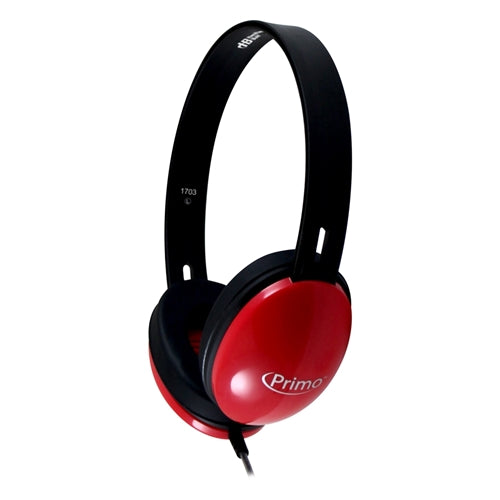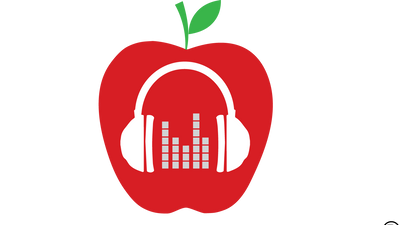Managing school audio equipment can be tricky, but with the right strategies, it's much easier. Let's look at some of the best ways to keep your school's audio gear organized and well-maintained. Good organization helps the equipment last longer, makes learning better for students, and makes teachers' jobs easier.
Key Takeaways:
- Create a digital inventory system for easy tracking
- Design good storage solutions for different types of audio equipment
- Set up a check-out/check-in system to monitor usage
- Establish regular maintenance routines to keep equipment working well
- Train staff and students on how to use the equipment properly
- Set up classrooms for easy access and use of audio gear
- Use technology to manage inventory and maintenance
- Find budget-friendly ways to organize equipment
Create a Centralized Inventory System
The first step in organizing school audio equipment is to make a centralized inventory system. This helps you keep track of all your gear and makes sure nothing gets lost. A good inventory system is really important for managing audio equipment well. It gives you a clear picture of what you have and how it's doing at any time.

Use a digital system to keep an up-to-date list of all your school headphones and audio devices. This makes it easy to see what you have, what's being used, and what might need fixing or replacing. Try using cloud-based inventory software that lets many people access and update information at the same time. This system should include details like model numbers, when things were bought, warranty info, and maintenance history for each piece of equipment.
Design Efficient Storage Solutions
Good storage is really important for keeping audio equipment organized and in good shape. Make special storage spaces for different types of equipment. Good storage not only protects the equipment from damage but also makes it easier for teachers and students to get and return items, which helps keep everything more organized.
Think about using classroom packs or storage carts made just for audio equipment. These can help keep everything neat and easy to get to. For bigger items like speakers or amplifiers, you could use shelves on the wall or lockable cabinets. Use clear, strong plastic bins for smaller things like microphones, cables, and adapters. Label everything clearly and maybe use a color-coding system to make it even easier to find things.
Implement a Check-Out/Check-In System
To keep track of who's using what equipment and when, set up a check-out/check-in system. This can be as simple as a sign-out sheet or as fancy as a digital booking system. A good system like this makes sure people are responsible, reduces the chance of losing things, and helps plan maintenance based on how much things are used.
Steps for Implementing a Check-Out System
- Create a list of all available audio equipment
- Set up a digital or physical sign-out sheet
- Train staff and students on the check-out process
- Regularly review and update the system
When setting up a check-out system, think about using QR codes or barcodes for quick scanning and tracking. Set clear time limits for how long people can use equipment and decide what happens if things are returned late or damaged. This helps teach people to be responsible and makes sure equipment is available when needed for different school activities.
Establish Maintenance and Care Protocols
Regular maintenance is really important for keeping audio equipment working well. Set up clear rules for cleaning and taking care of the equipment. Good maintenance not only makes the equipment last longer but also makes sure it works well all the time, which is really important for good learning experiences.

For example, noise-isolating earbuds with memory foam cushions should be cleaned often to keep them hygienic and sounding good. Make a schedule for regular checks and cleaning of all audio equipment. Create a list of things to do daily, weekly, and monthly. This might include wiping down headphones, checking cable connections, testing battery-powered devices, and looking for any signs of wear or damage.
Train Staff and Students
Good training is really important for everyone who uses the audio equipment. This includes teaching them how to handle the gear, how to store it correctly, and what to do if something isn't working right. Good training makes sure equipment is used correctly, which means it's less likely to get damaged and can be used better for learning.
Key Benefits of Audio Learning in Schools
- Builds literacy skills similar to reading text
- Introduces advanced vocabulary beyond current reading level
- Conveys emotional context through tone and rhythm
- Creates opportunities for shared learning experiences
- Helps address the "word gap" for some students
- Complements traditional reading methods
Think about making video tutorials or step-by-step guides for common tasks like connecting microphones or fixing basic problems. Have regular training sessions, especially at the start of each school year or term. Encourage students to care for and be responsible with the equipment, teaching them to treat it as an important learning tool.
Optimize Classroom Setup
The way you set up your classroom can make a big difference in how easy it is to manage audio equipment. Think about where you put speakers, microphones, and other gear to make them easy to access and use. A well-designed classroom not only makes it easier to manage equipment but also makes learning better overall.
Consider using multi-person listening centers to create organized audio stations in your classroom. These centers can be great spots for audio activities, making it easier to manage equipment and do group work. Plan your classroom layout to include special areas for storing and using audio equipment. Make sure power outlets are easy to reach and think about using ways to keep cables tidy and prevent tripping.
Use Technology for Management
Use technology to help manage your audio equipment. Use apps or software to keep track of inventory, schedule maintenance, and manage check-outs. Using technology can make managing everything much easier, saving time and reducing mistakes.
Benefits of Audio Learning in Schools
- Builds literacy skills similarly to reading text
- Introduces vocabulary beyond a student's current reading level
- Conveys emotional context through tone and rhythm
- Creates opportunities for shared learning experiences
- Helps address the "word gap" for students from different backgrounds
- Complements traditional reading for comprehensive learning
Think about using a digital system that can track where equipment is, how it's doing, and when it was last fixed. Look for software that can do things like scan QR codes, send reminders for maintenance, and make reports to show how equipment is being used. This can help you make smart decisions about buying and assigning equipment.
Budget-Friendly Organization Strategies
You don't always need expensive solutions to keep your audio equipment organized. There are many cheap options that can work just as well. Creative and cost-effective organization strategies can help schools make the most of what they have while still keeping everything well-organized.
For example, simple color-coded headphones can make it easier to sort and organize equipment by class or grade level. Use cheap plastic bins or reused containers for storage. Make your own charging stations using power strips and cardboard dividers. Set up a buddy system where students work in pairs to take care of equipment and keep it organized.
Conclusion
Organizing and managing school audio equipment doesn't have to be hard. By making a good inventory system, using smart storage solutions, setting up check-out procedures, and keeping up with maintenance, you can keep your audio gear in great shape and ready for learning. Remember, the goal is to make it easy for teachers and students to use the equipment, so they can focus on what's really important - learning! With these strategies, schools can create a place where audio equipment makes learning better, not harder. By getting staff and students involved, you can help everyone feel responsible for taking care of the equipment, which will help keep everything running smoothly for a long time.





